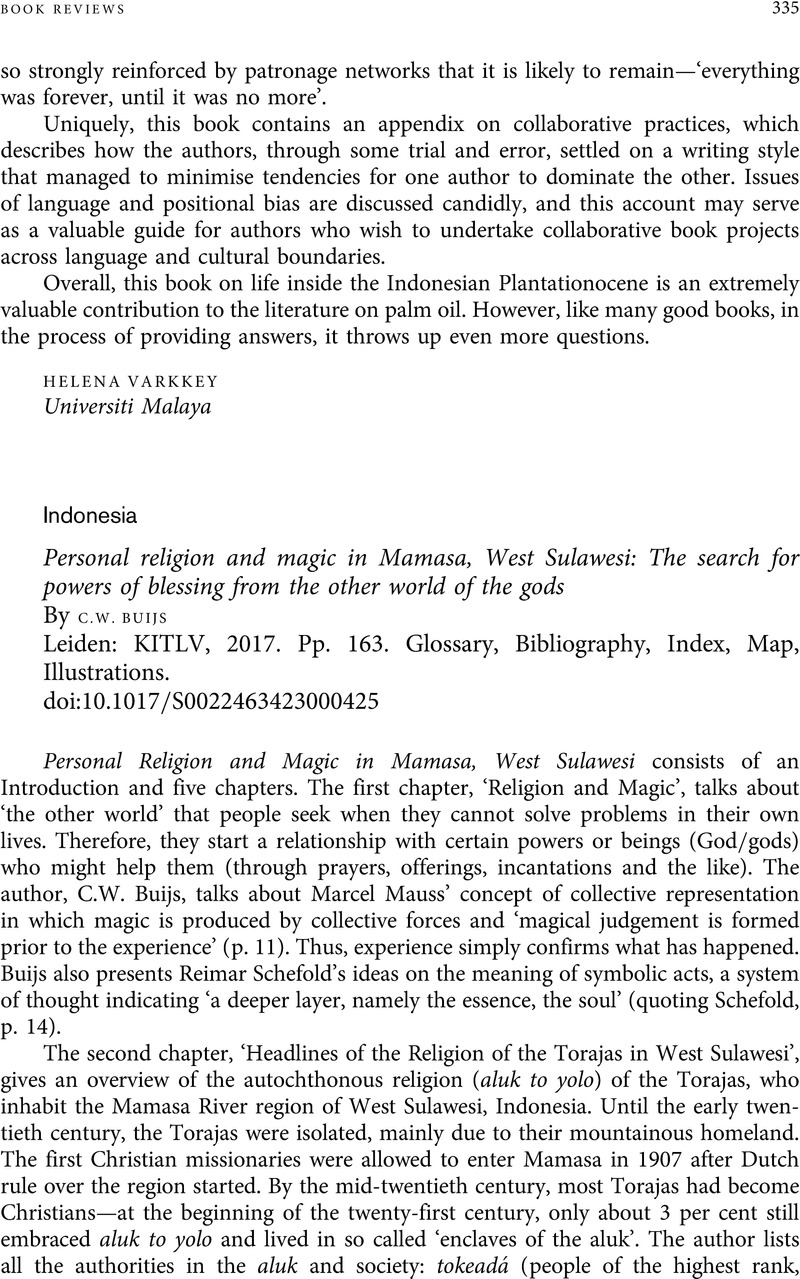No CrossRef data available.
Article contents
Indonesia. Personal religion and magic in Mamasa, West Sulawesi: The search for powers of blessing from the other world of the gods By C.W. Buijs Leiden: KITLV, 2017. Pp. 163. Glossary, Bibliography, Index, Map, Illustrations.
Review products
Indonesia. Personal religion and magic in Mamasa, West Sulawesi: The search for powers of blessing from the other world of the gods By C.W. Buijs Leiden: KITLV, 2017. Pp. 163. Glossary, Bibliography, Index, Map, Illustrations.
Published online by Cambridge University Press: 24 July 2023
Abstract
An abstract is not available for this content so a preview has been provided. Please use the Get access link above for information on how to access this content.

Information
- Type
- Book Review
- Information
- Copyright
- Copyright © The National University of Singapore, 2023


